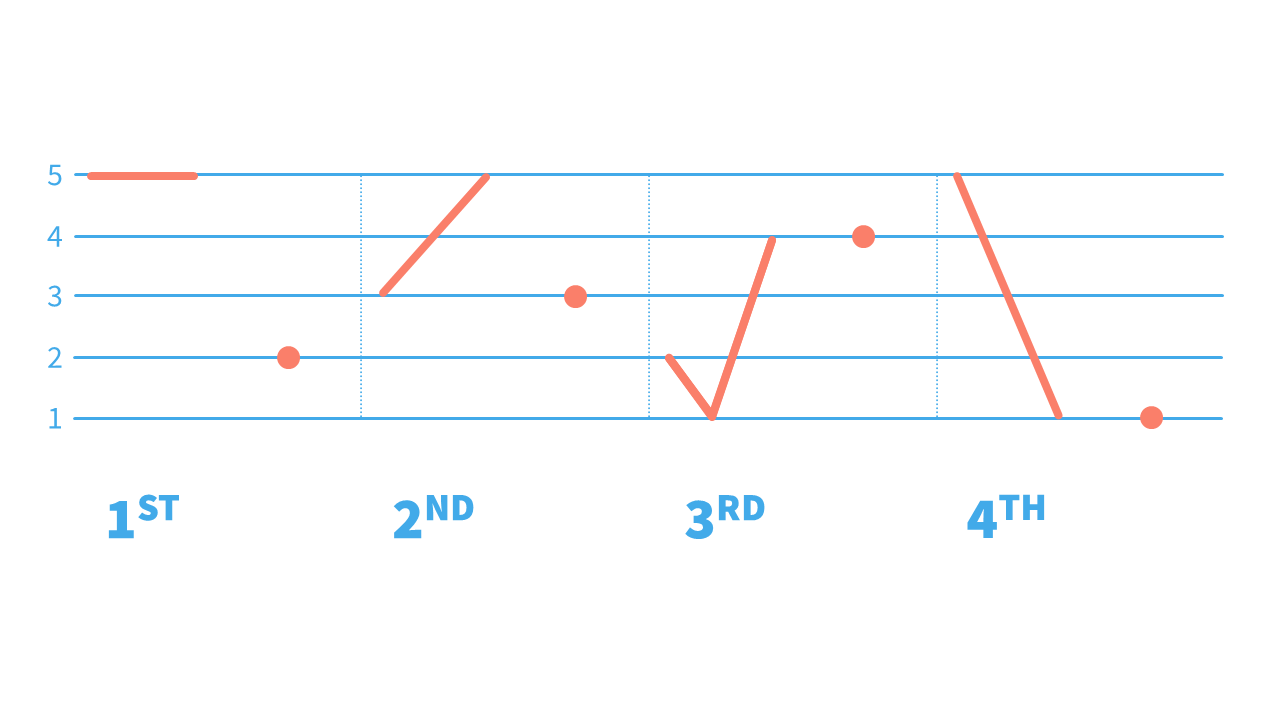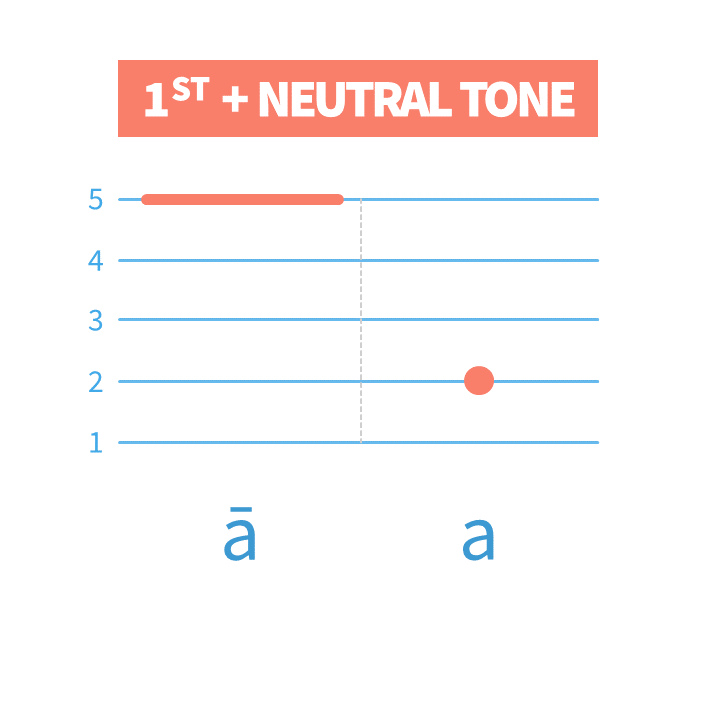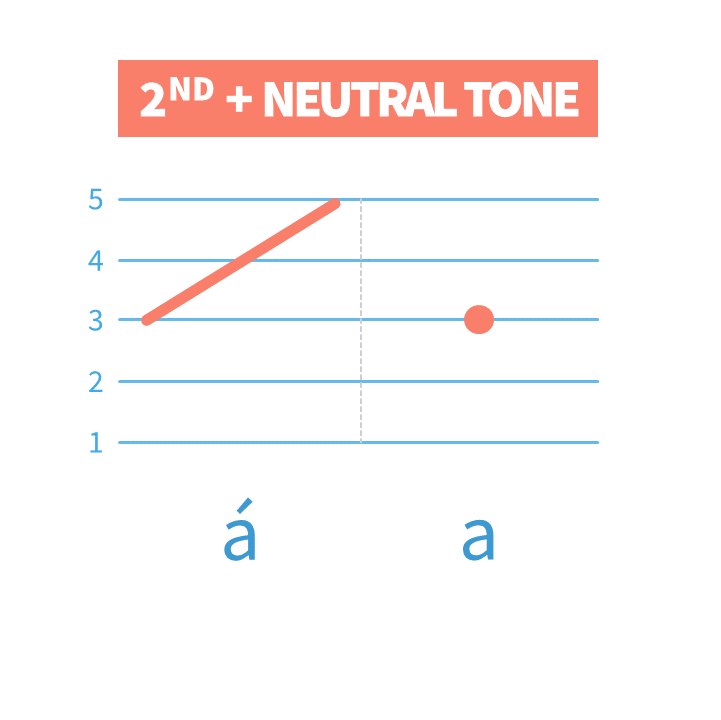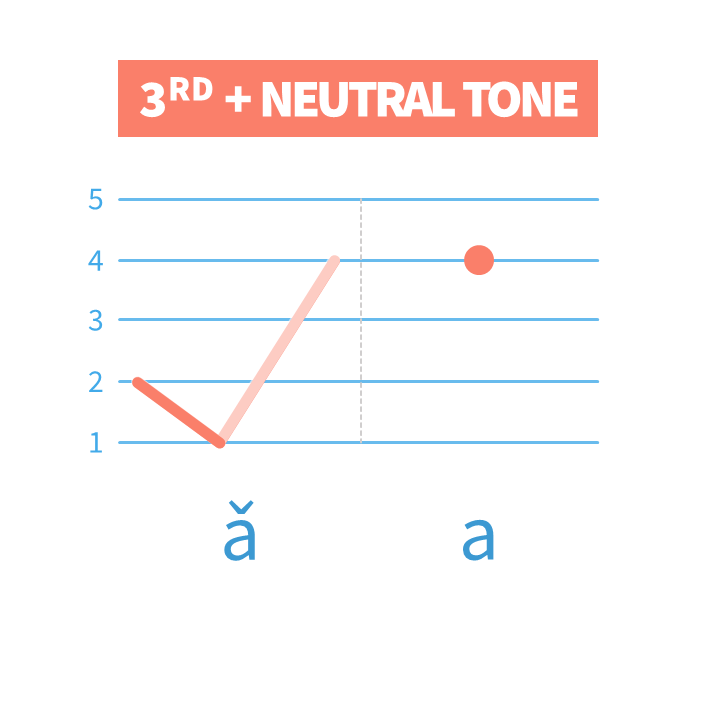Tone Lesson 11 – The Neutral Tone (1)

MANDARIN CHINESE NEUTRAL TONE: NOT THE PINYIN FIFTH TONE
This lesson is about Mandarin Chinese Neutral Tone. The Neutral Tone is not a real tone, that is why there is no Pinyin Fifth Tone. There are two reasons why Mandarin Chinese Neutral Tone is not a real tone: (1) characters in Chinese without Tones all have an original Tone. The Neutral Tone is only a modification. (2) the Mandarin Chinese Neutral Tone does not have a fixed Tone. We will be practicing the Neutral Tone with Chinese tone exercises.
How to Pronounce Chinese Without Tones?
When we see characters in Chinese without Tones, we will pronounce them in the Neutral Tone. The Mandarin Neutral Tone sounds a light, vague and short. And the Neutral Tone doesn't have any tone marks on it, we will just write the Final by itself.
Mandarin Chinese Neutral Tone Is Not The Pinyin Fifth Tone
There are only Four Tones in Chinese, and the Neutral Tone is not a real Tone, so there is no Pinyin Fifth Tone. There are two reasons:
(1) Characters in Chinese without Tones all have their original Tones. A syllable is pronounced in the Neutral Tone because its original Tone gets modified or changed sometimes. The chart below shows you some examples. They are 2-syllable words with both syllables made of the same characters. In each word, the first character is pronounced in its original Tone while the second character is pronounced in the Neutral Tone.
| PINYIN | CHINESE | ENGLISH |
|---|---|---|
| bà ba | 爸爸 | dad |
| mā ma | 妈妈 | mom |
| gē ge | 哥哥 | big brother |
| jiě jie | 姐姐 | big sister |
| dì di | 弟弟 | little brother |
| mèi mei | 妹妹 | little sister |
(2) The Mandarin Chinese Neutral Tone does not have a fixed pitch or pitch range. The pitch of a Neutral-tone syllable is decided by the syllable in front of it. The Neutral Tone after the Fourth Tone has the lowest pitch, while the Neutral Tone after the Third Tone has the highest pitch. Each red dot in the picture below shows the pitch of the Neutral Tone after the First, the Second or the Fourth Tone.

Chinese Tone Exercises: The Neutral Tone




TONE EXERCISES GROUP 1
| PINYIN | CHINESE | ENGLISH |
|---|---|---|
| dōng xi | 东西 | things; stuff |
| hái zi | 孩子 | child; kid |
| hǎo ba | 好吧 | OK |
| yào bu | 要不 | or else |
TONE EXERCISES GROUP 2
| PINYIN | CHINESE | ENGLISH |
|---|---|---|
| tā de | 他的 | his |
| bié de | 别的 | other |
| hǎo de | 好的 | OK |
| shì de | 是的 | yes |
TONE EXERCISES GROUP 3
| PINYIN | CHINESE | ENGLISH |
|---|---|---|
| dīng zi | 钉子 | nail |
| xié zi | 鞋子 | shoes |
| nǎo zi | 脑子 | brain |
| shàn zi | 扇子 | fan |
This is the best explanation of the neutral tone I’ve seen–thanks! I have one question, though: how do you tell a neutral tone from the original tone with written characters?
One of the examples you gave is “dì fāng” (local) and “dì fang” (place). Both are 地方 in my dictionary. My understanding is that the neutral tone “fang” is an alternate pronunciation of 方, which is first tone “fāng”. This makes sense to me for spoken conversation, but how does this work with written characters? I’m working through your characters course now and you mentioned that characters can have multiple meanings–is this one of those times?
In the next lesson about 3+5(neutral) combinations, you stated that when the neutral syllable is originally another third tone, the first syllable is pronounced as a second tone. But for jie3 jie5 you pronounced jie3 as a half third tone, not a second tone. I was wondering why?
When a third tone syllable followed by a First, Second, Fourth or a Neutral Tone, the first Third Tone is pronounced as a Half Third Tone.